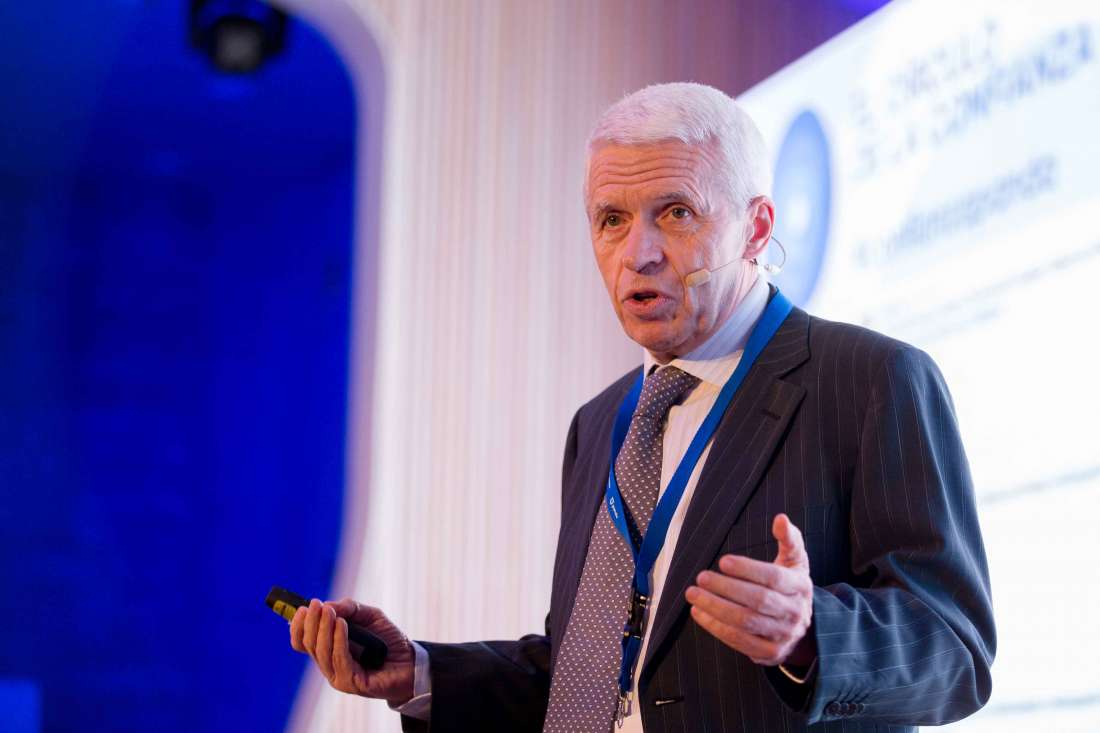The 35th International Workshop on Global Security was presented in Paris on April 16 and 17 last year, with the theme of “Global Security in the Age of Hybrid Warfare and the Cyber Threat.” The alignment between the Workshop and Panda Security’s quality standards allowed us to take part in this event as a technology partner.
The subjects covered included hybrid conflicts, with emphasis on IT piracy, Russian (and other) cyberinfluence operations, which are amplifying divisions within and among countries, as well as the dangers of cyber jihadism, the roles of state actors in penetrating critical infrastructure, the implications of quasi-state actors (such as Google or Facebook), and the policy and other steps that are needed to counter them.

The workshop was presented in collaboration with the Institut des hautes études de défense nationale (IHEDN–Institute of Advanced Studies in National Defence) within the organization of the French Prime Minister, and the General Direction of International Relations and Strategy (DGRIS) in the Ministry of Armed Forces. This series of workshops was sponsored by the French Ministry of Armed Forces, the NATO Division of Public Diplomacy, the US Department of Defense and other international companies such as McAfee, Fujitsu and MITRE.
Panda Security’s contribution as Technology Partner was based on working on how the changes that global society is experiencing can bring about a more secure world and a shared, peaceful future together.
We need to regulate telcos and social and advertising companies related to security or manipulation issues
To do this, according to the President of Panda, José Sancho, “We need to regulate telcos and social and advertising companies related to security or manipulation issues”. Over the last 20 years, 80% of the productivity increase has had to do with IT, that is, with hardware, software or communications. “Although they seem like three very different things, they are all based on software, and, by definition, software is vulnerable.” states Sancho.
The meeting generated debate, and aimed to allow leading actors in the IT world the chance to respond to global questions. This is especially important at a time when attacks on our values are carried out not only with weapons and physical violence, but also come from the Internet and use our own IT infrastructure.
As such, we must protect ourselves. A great deal has already been done in this regard, but, are we capable of establishing integral protection? Here are a few observations:
- Cyberwar is a real conflict, a huge challenge for our democracy, and we know who the players are, and what weapons they are using: theft, extortion, propaganda and fake news, espionage, and sabotage are the main tools.
- The main families of cyberattackers are the USA and China, because they have the most resources. Cybersecurity service companies in the U.S. that are listed on the Nasdaq employ 250,000 people that are dedicated on a full-time basis to U.S. intelligence agencies. In China, the situation is less transparent, but if we bear in mind only what the companies trading on the stock market report, we can suppose that China has even more people than the USA dedicated to cybersecurity, and with a less defined line between state and company.
- The reality facing cybersecurity vendors is that the malware production industry is growing faster than we can produce software. The other characteristic of these products is that they are global. Once you have a product, you have the means to defend against all the malware coming from that source at that time. The other side of the industry are services, since we need services based on people to prevent and defend against those attacks at a local level.
- Future digital weapons are not just developed by criminals or companies. They’re also developed by large countries with the support of large investments, and new and more sophisticated technologies to get around digital defenses. It is no secret that the infamous WannaCry attack was developed with technology stolen from the CIA.
- Most of the infections we receive these days do not focus on the perimeter, rather on the endpoint. But, according to Verizon, only 4% of IT security investment is aimed at endpoint security.
- In the period of just one year (2007), we faced a huge growth of over 70 million threats. That was 10 times more than we had seen in the previous 30 years, and only one technology was capable of tackling this situation. a new cloud-based cybersecurity model, which meant moving away from heavy signatures that used hash with deep machine learning, artificial intelligence and big data environments. And today, with a few hold-outs in some sectors, it has proven to be the only technology capable of dealing with this cybercrime boom. It was made available for purchase for the first time in 2006 under the name Panda Antivirus.
- Europe needs a single voice and leverage for our own products. If in Europe we want to play a significant role in protecting our own digital environment, and even in digitalization itself, we must collaborate. Only by pooling all European resources, including governments, companies, industries and technology providers, can we protect ourselves, in spite of the shortage of IT specialists to protect us in the short term, which is a mandatory requirement.
While we wait for the global trigger that will launch this project, we will continue to work on initiatives to boost the expansion of European digital sovereignty.


